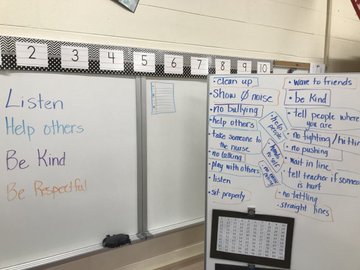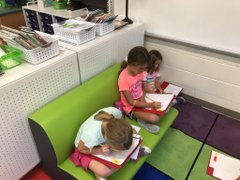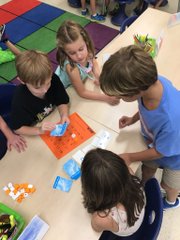

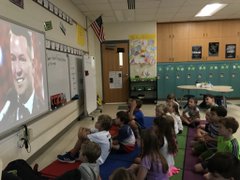
Here's what we've been up to lately:
Math:
We continue to identify and count coins. Students are getting so much better in this area and feeling much more confident! Thank you for helping out at home! I can see the benefits of this in class with identification of coins. I gave students this scenario "I have lots of coins in my pocket and need to trade them in so that my pockets aren't nearly as full." They then played a game in which they exchange coins in order to have the smallest number of coins.
Students are using the following strategies to add larger numbers together:
1. Make 10 - Students make 10. In 17 + 8 + 3 + 2, students would combine 7 + 3 = 10 and 8 + 2 = 10, so 10 + 10 +10 = 30.
2.
Doubles - Students find doubles when possible. In 3 + 8 + 8 + 3,
students would see that 3 + 3 = 6 and 8 + 8 = 16, so 6 + 16 is 22.
3. Compensation - Students will determine a ten or a double, but have to use part of another number. If you have 2 + 7 + 4, you can say 2 + 7 + 1 (from the 4) = 10, but then 4 - 1 = 3, so 10 + 3 = 13. OR 5 + 7 + 4, you would make a double of 7 (the 5 + 2 from the 4) + 7 = 14, then 4 - 2= 2, so 14 + 2 = 16. This strategy is a little more advanced, but I taught it recently to extend to students who were ready for it. :)
The big focus over the last few weeks has been showing their mathematical thinking. Students had a hard time with this in the beginning, but it is coming more easily to students now. Students can show their thinking with either pictures, numbers, or words. If showing thinking in pictures, there must be organization. I have asked students to arrange circles, dots, squares, etc., in rows of ten. Here are a few ways:
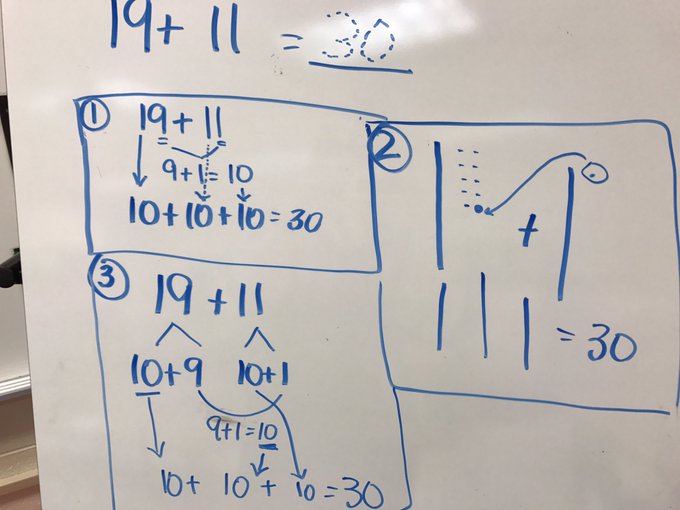
Ways to help at home:3. Compensation - Students will determine a ten or a double, but have to use part of another number. If you have 2 + 7 + 4, you can say 2 + 7 + 1 (from the 4) = 10, but then 4 - 1 = 3, so 10 + 3 = 13. OR 5 + 7 + 4, you would make a double of 7 (the 5 + 2 from the 4) + 7 = 14, then 4 - 2= 2, so 14 + 2 = 16. This strategy is a little more advanced, but I taught it recently to extend to students who were ready for it. :)
The big focus over the last few weeks has been showing their mathematical thinking. Students had a hard time with this in the beginning, but it is coming more easily to students now. Students can show their thinking with either pictures, numbers, or words. If showing thinking in pictures, there must be organization. I have asked students to arrange circles, dots, squares, etc., in rows of ten. Here are a few ways:

- Continue to count coins. To extend their thinking, students can play "store." They can buy items (total less than $1.00) and figure out how much two items would be, then determine the change they get back when they pay with a $1.00 bill!
- Create a story problem with two addends that up to less than 100. We are just beginning subtraction, so they may need help showing their work.
Word Study:
Students are now in word study as a whole group using common sight words as our sort. They are learning the routine and the different activities and my expectations. We have one more week of sight words, then students will be broken into groups based upon where each student is.
Students use wikki sticks (wax strings) to mold the strings to form letters to build their words. Students love writing their words in FANCY letters or different colored pens! I introduced Word on the computer yesterday and students will have a chance to use it for word study next week. They LOVE the idea of changing font size and type. We keep it fun!



Writing:
The last two weeks has been fun in writing! This has been a "rose" each day! Students draw a picture of their character then write about it with details. Next, students draw the setting around their character then write about it with details. Coming up this week, students draw their character in the midst of a problem. They will then write the plot to the story. Lastly, students draw their character solving the problem. They will then write about the solution. This creates a fun, complete story.
Ways to help at home:
Students can write just about anything at home. They have had experience writing letters, so have them write to someone and tell them about something they are enjoying in school.
Reading:
We continue to add to CAFE, our reading strategy board. C = comprehend (understanding what you read), A = accuracy (reading correctly - words and prosody/intonation), F = fluency (the speed in which you read), and E (expanding the vocabulary - adding new words)
Students have been building stamina, persevering over challenging parts, but most importantly, students are rereading their text.
In the upcoming week, students will learn different strategies to read more difficult words.
1. Lips the Fish - Get their lips ready to make the sounds.
2. Stretchy the Snake - Sound out each letter as you come to it, then put them together.
3. Chunky Monkey - Identify parts of words and chunking those parts. For instance, in the word remake, identifying the word make and putting "re" in front of it. I used the word OW! as an example so they can identify it in now and down...word study words this week.

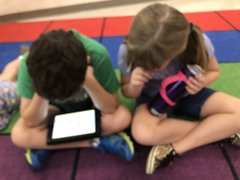

Ways to help at home:
- Practice makes perfect! The more reading your child does, the better they will get! Research shows between 20-30 minutes per day helps growing readers improve more rapidly.
- I want students to LOVE to read, just as I do! To get them to love it, they must love the story. Let your child choose what to read. If they are excited and engaged in the story, they will want to read more and more.
- Enjoy some fun project choices. I have several students who have done a few projects already! Reminder: First reading project due by November 1st.
Check out some of the ways students reflected on their reading at home...
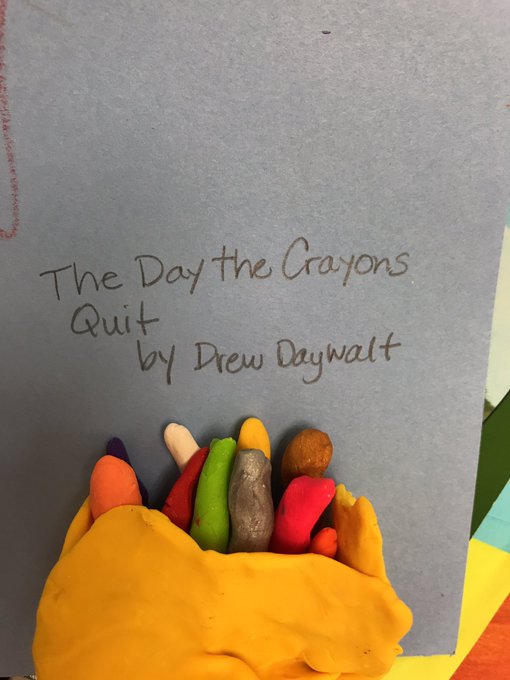

Social Studies:
Students have been busy bees the last few weeks! We began by viewing a Then and Now set of photos by Rufus Holsinger and Stacey Evans (http://uvamagazine.org/articles/charlottesville_then_now). We then "copied" the idea by designing a map as a whole class so that both our present and our past maps are the same. Students began with a Crozet-ish design which included a pond and a tree. Students then created two 3D maps...a map of the past and of the present.
Students also researched ways the past was different.



Now that they understand the difference, we will begin reading a historical fiction book that describes life on a sheep farm in a small valley in Colorado in the 1920s. Students will have to visualize life without electricity, running water, and indoor plumbing!
Here are our maps. What similarities and differences do you notice?
Past:

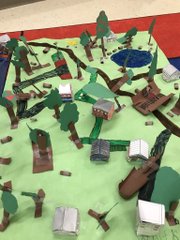
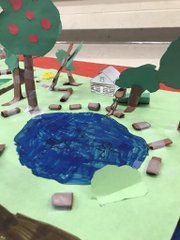
Present:
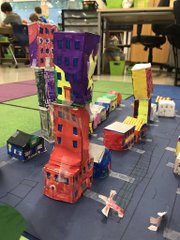


Ways to help at home:
- Continue conversations about how life was different when you were young.

